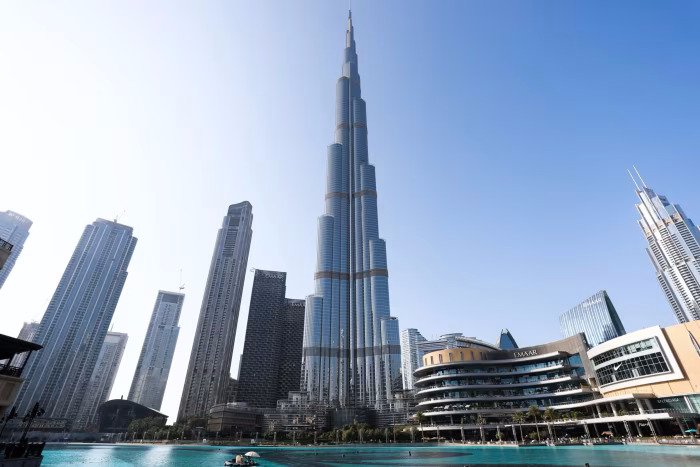The Real Estate Landscape in 2025: Momentum, Caution & Opportunity
Introduction
The real estate sector globally is going through a period of recalibration. After years of post-pandemic stimulus, low interest rates, and pent-up demand, many markets are now balancing growth with the risks of oversupply and macroeconomic shifts. In the Middle East — especially in the UAE — the market is showing both strength and early signs of moderation. For real estate professionals, investors, and prospective buyers, understanding these dynamics is more important than ever.
The UAE Market in 2025: At a Glance
Economic Tailwinds
-
The UAE’s economy is projected to grow strongly in 2025, driven by higher oil output and sustained momentum in non-oil sectors.
-
The government is actively pushing infrastructure, tourism, and diversification strategies, which all feed into demand for real estate.
-
The recent interest rate cuts are making borrowing slightly easier, providing a supportive backdrop for mortgages and investments.
Price Trends: Upward, but with Caveats
-
In Dubai, property prices continued rising in the first half of 2025. Villas led the surge, with double-digit year-on-year growth.
-
Apartments also rose across major communities, though at a more moderate pace.
-
Sales of ultra-luxury homes (USD 10 million+) broke records, confirming Dubai’s status as a global luxury hub.
-
However, analysts warn of potential downward pressure, forecasting possible double-digit declines in some Dubai segments through late 2025/2026 due to oversupply.
Rentals & Yield Pressures
-
Rental growth in Dubai has slowed — from over 20% annual growth last year to single-digit increases now.
-
In contrast, Abu Dhabi’s rental market is heating up, with strong double-digit growth thanks to limited supply and increasing demand.
-
Investors who relied on sky-high yields must now be more selective about location, quality, and timing.
Supply, Freehold Expansion & Foreign Buyers
-
A significant influx of new units is expected over the next few years, especially in emerging communities.
-
Dubai expanded freehold zones in 2025 (Sheikh Zayed Road, Al Wasl, Jaddaf, Dubai South, etc.), opening doors to more foreign investors.
-
Developers are introducing mixed-use communities, smart homes, and sustainable living concepts, making competition fiercer.
Rising Competition: Abu Dhabi Gains Ground
-
Buyer interest in new developments in Abu Dhabi has surged, with demand growing by nearly one-third in just a few quarters.
-
Abu Dhabi now commands a larger share of overall UAE demand, positioning itself as a serious alternative to Dubai.
Developer Moves & Market Strategy
-
Leading developers are increasingly exploring international opportunities while phasing domestic launches more carefully.
-
Incentives like flexible payment plans, post-handover offers, and higher transparency are being introduced to retain buyer confidence.
-
Regulatory upgrades and digital platforms are pushing the market toward greater maturity and investor security.
Key Takeaways & What to Watch
1. Location, Quality & Differentiation Will Matter More
In a more competitive environment, the premium will be on projects with outstanding design, amenities, connectivity, and brand reputation. Commodity developments in fringe areas may struggle.
2. Time Your Entry – But Don’t Wait Too Long
While corrections are possible, early access to well-positioned projects before full supply floods the market can still yield upside. Waiting too long could mean missing early investor advantages.
3. Focus More on Cash Flow & Yield Protection
Rental yields remain attractive in certain areas, but investors should stress-test against possible rent declines and ensure financing structures are sustainable.
4. Monitor Regulatory & Macro Shifts
Interest rates, visa policies, and infrastructure announcements will play a huge role in shaping demand. Current monetary easing is a positive sign for buyers.
5. Explore Adjacent Markets
Abu Dhabi’s momentum, plus selective secondary UAE cities, could provide balanced growth opportunities with less speculative risk.
Conclusion
The UAE real estate market in 2025 presents a fascinating mix of opportunity and caution. Strong economic fundamentals, freehold expansions, and international investor demand are fueling growth. Yet oversupply, rental deceleration, and the possibility of price corrections remind us that the boom years are evolving into a more mature market cycle.
For savvy investors, the future belongs to those who choose carefully — focusing on prime locations, strong developers, and projects that combine lifestyle value with long-term growth potential. Adaptability will be the key in navigating this shifting landscape.

